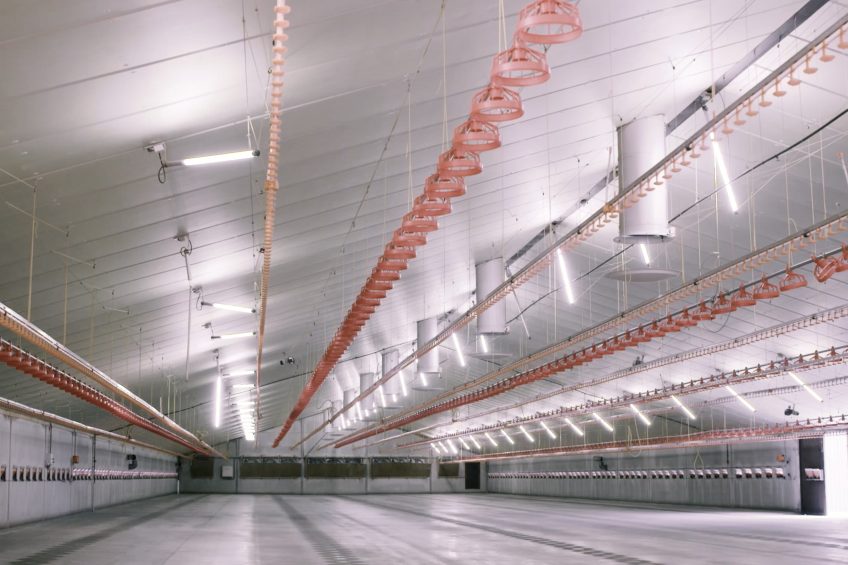8 myths on antibiotic resistance disproved

The challenge of producing sufficient healthy food is increasing as the push to reduce the use of antibiotics in livestock farming grows. A new book offers a practical guide to lead you through the most misleading myths that exist around antibiotic use and resistance in livestock farming.
The livestock producing industry is a dynamic sector that has undergone enormous changes in recent years. Globalisation means that the meat on your plate can come from anywhere in the world. At the same time, consumers are changing their way of shopping. Nowadays, one prefers to go to the supermarket where there is a huge variety of products instead of going to the local butcher. The stringent demands imposed by these retailers have put farmers’ margins under pressure and are forcing them to make savings by using economies of scale. This trend towards ever-bigger farms means that production costs and optimising efficiency have become key concepts in modern livestock production.
In addition to this changed market situation, farmers also have to comply with a string of regional guidelines and European directives, which not only regulate the stocking density for better animal welfare and managing manure, but also impose strict rules with regard to reducing antibiotics.
Innovation in agriculture is crucial
According to the United Nations’ World Population Prospects 2017, the current world population of 7.6 billion is expected to reach 9.8 billion in 2050. If animal production is to meet the ever-growing need for livestock products, then larger-scale operations, specialisation and innovation will be crucial. Though the challenge of producing sufficient healthy food remains the same, animal production companies now have to meet the additional challenge of raising healthy animals without the help of antibiotics. Therefore, a radical change in the industry’s management and way of thinking is needed: from disease management towards health management, from a strategy of curative medicine to a strategy of preventive medicine and biosecurity.
To address this issue, a book has been published in collaboration with CID Lines that deals with eight myths on antibiotic resistance. The book was written by Professor Jeroen Dewulf, an expert in the field of antibiotic reduction, from the University of Gent. Although antibiotic resistance has been investigated for several decades, there are a lot of false ideas and doubts regarding this topic. 3 of the 8 myths reveal that antibiotic resistance is still an underestimated phenomenon. For example, the first myth to debug is ‘Antibiotic resistance? Not a problem’, or myth 5, ‘resistance is here to stay. No matter what we do, the problem will only grow bigger.’
Myths are a common phenomenon when it comes to the diffusion of a new idea. The Rogers Adoption Curve, from Everett M. Rogers describes how new ideas are accepted and adopted by groups and cultures. The innovators start by bringing the new idea. The early adopters initiate the change, the early majority steps in, followed by the late majority. There is a process behind how people come to change their habits, this process is related to how an individual accepts the change:
- At first, there is knowledge: we need to learn about the existence and the function of the new idea
- Then persuasion: the person needs to be convinced of the value of the idea
- Decision is following. In this step people take the decision to adopt the idea
- Implementation is the step to put the idea to use
- And finally, the confirmation is the ultimate acceptance (or rejection) of the idea.

Complexities of antibiotic resistance
The book offers knowledge (step 1) and facts to boost the confidence necessary in step 2 of the process to accept change. The first part of the book helps to understand the scale, impact and complexity of antibiotic resistance. It describes the mode of action of a bacteria, and the mechanisms of resistance. It tackles popular misconceptions such as ‘People get antibiotic resistance by eating meat’. Indeed, as a complex mechanism, the source of antibiotic resistance is scarcely shared, but mainly distorted through extreme events relayed in mainstream literature and newspapers.
The second part is all about providing solutions for the future. The last two demystified ideas are false perceptions related to the possibility of change, one of them being ‘Antibiotics are needed to keep animals healthy’. What is the way forward? How we came to focus on biosecurity and what is biosecurity? It is presented as a practical guide on how to organise or reorganise animal production in a sustainable way, using less antibiotics. Numerous examples and best practices from field studies are included.
A call for action
With the book, Professor Dewulf wants to call out for action and make clear that this problem should not be seen as a threat but as an opportunity to take the next step towards sustainable animal husbandry. Belonging to the group of early adopters, it is natural for CID Lines to partner with Professor Dewulf to spread the knowledge and persuade the industry that change is possible. Initially created by 2 farmers in Flanders, Belgium, the company is now one of the main international players in the market of cleaning and disinfecting solutions.
The book is aimed at all farmers and every stakeholder of the industry, who believe that livestock production has a brilliant future, focusing on human and animal health. As mentioned within the book; taking the right actions proves to be economically viable as well. This is, therefore, a win-win situation for everyone involved.
Visit CID Lines in Hall 23 during Eurotier to learn more about the 8 myths on antibiotic resistance or email info@cidlines.com
| Author: Joséphine Verhaeghe, CID Lines |












